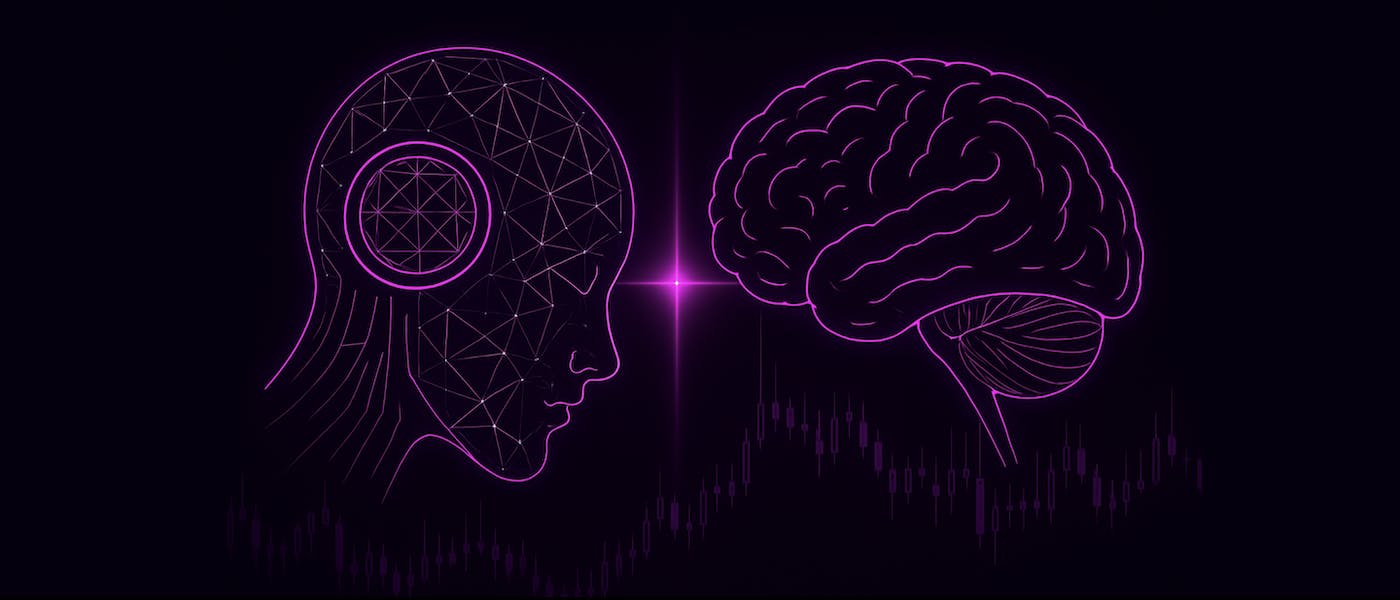Thinking of handing your trades over to an algorithm? Just know this: bots don’t panic, don’t revenge trade, and don’t chase green candles. But they also don’t ask questions before they dump your portfolio in a feedback loop. Let’s talk about what bot trading really means and the risks it entails.
Why “safety” is a complicated thing
Before we crown robots the new kings of trading, let’s pin down what “safety” even means. In trading there are two risk layers:
A bot can wipe out the first column overnight, but it can also introduce brand-new problems from the second. Keep both in mind.
Human biases: where bots really shine
Disposition effect? Practically gone
Speed & consistency with zero emotional lag
When markets spike at 08:32:07, you blink, but the bot executes. Academic work analyzing split-second fills shows bots cutting average impulse-driven order sizing errors by 70 % versus manual desks.
Smoother equity curves
A 10-year Nasdaq sample compared
Lower slippage and transaction drag
Dedicated execution algos trimmed average slippage by 18 % in 2025 tests, thanks to real-time order-book slicing.
Bottom line: for escaping the pitfalls of human error, bots are a great bet. They never rage-click the buy button after three coffees, never double-down to “get even,” and never freeze when a candle turns red.
The Automation Paradox: new mind-games for humans
However, the benefits of automation come with their own psychological challenges:
- Over-trust and lazy monitoring. Retail adoption of plug-and-play forex bots
grew 340% in 2025 , and case studies show many users stop supervising once the green PnL line appears. - Risk illusion. Because decisions feel “outsourced,” traders quietly raise leverage or widen risk limits. The fear hasn’t vanished; it’s just been postponed.
Psychologists call this the automation paradox: the better the tool, the more complacent the operator. Fail to stay engaged and the safety buffer erodes.
When code goes wild: technical & systemic risks
Flash-crash physics
High-speed algorithms can chase each other down the order-book and vaporize bids in milliseconds. Analysts trace most modern flash crashes, including the 2022 European equities plunge, back to feedback loops in poorly deployed execution code.
Liquidity cliffs
Widespread adoption of similar algorithmic signals can cause market exits to cluster. This clustering widens spreads, prompting bots to withdraw, exacerbating price drops before human intervention is feasible
‘Small’ bugs that scale instantly
A missing minus sign in one loop can fire off 100,000 orders, which is an error rate no human desk could match for sheer speed.
The takeaway: psychological risk shrinks, but systemic fragility grows.
Regulators weigh in
The UK’s Financial Conduct Authority (FCA) spent 2024-25 clarifying that existing conduct rules already apply to AI-driven trading and opened an “AI Live Testing” sandbox to stress-test models before release.
This regulatory shift means that traders must implement redundant failsafes, comprehensive logging, and rapid kill-switch capabilities.
Globally, traders can expect increasing mandates for pre-trade risk controls, transparent audit trails, and continuous real-time anomaly detection.
Building a safer hybrid stack
Want the psychological edge of automation without the systemic nightmares? Use a three-layer safety net:
Code-level governors
— Hard position limits and max daily loss baked into your strategy.
— Dual-channel risk checks (strategy plus broker) so one bug can’t break the circuit.
Human-in-the-loop monitoring
— Dashboards that highlight PnL outliers, latency spikes, and quote-to-trade ratios.
— Mandatory “four-eye” reviews before pushing model updates.
Diversity of models
— Combine uncorrelated strategies: mean-reversion + trend + market-making.
— Separate executions across venues to avoid one-exchange meltdowns.
Think of it as a cockpit, not autopilot: software handles the heavy lifting most of the time, but you keep your hands close to the controls.
So… are bots actually safer?
- For your own brain, yes. Algorithms remove the classic emotional traps, such as greed surges, fear crashes, and the disposition effect.
- For the market at large and for you if you don’t monitor, maybe not. Technical glitches propagate faster than emotions ever could, and correlated algos can turn a trickle into a systemic flood.
The smart play is a hybrid discipline: let code execute the plan, but remain in charge of the plan: watch the dashboard and be capable of pulling the plug should anomalies spike.
Follow that logic, and you’ll get the best of both worlds: iron-clad discipline and a live safety pilot ready to intervene. Not perfect, but a whole lot safer than trusting either fallible humans or un-supervised code alone.


